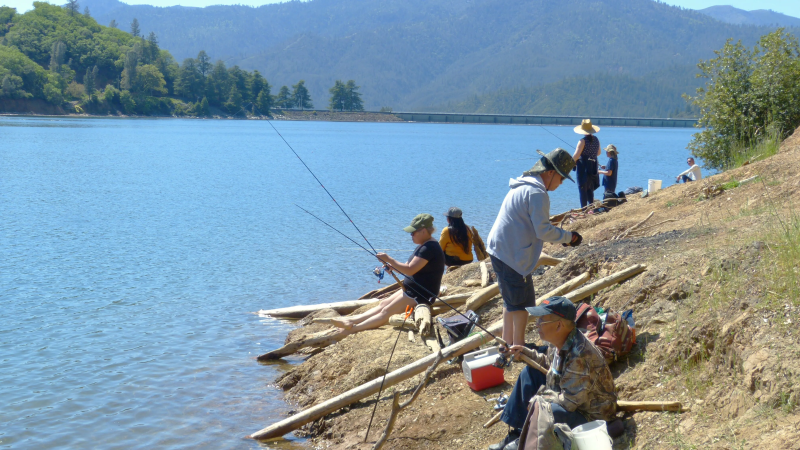Billions of gallons of water from Lake Shasta disappearing into thin air
Hundreds of millions of gallons of water in Lake Shasta and other major reservoirs in northern California have been disappearing into thin air.
Considering the region has suffered recently through some of the most extreme heat ever recorded, water evaporating off the lakes in vast quantities hasn't surprised water managers.
On July 3, 288.8 million gallons of water evaporated off Lake Shasta. And during the first nine days of July, 3,392 cubic-feet per second of water — or about 2.2 billion gallons — turned into vapor and floated away into the atmosphere.
That is a substantial amount of water, said Don Bader, area manager for the U.S. Bureau of Reclamation, which manages Shasta Dam. For comparison, he said that is more than the amount of water flowing down Clear Creek south of Redding.
"That is significant enough that it affects where our projected reservoir levels will be at the end of the season," he said.
Higher evaporation levels are expected during the summer, he said. This year, though, with temperatures breaking all-time-high records, the evaporation has risen some, he said.
"It's probably been higher the last nine days because we haven't seen weather like that in a long time," Bader said.

The high temperature the National Weather Service recorded at the Redding Regional Airport reached 119 degrees last Saturday, July 6. It was the first time Redding had ever endured any temperature over 118 degrees, according to the weather service.
But the heat beat-down goes on.
Daily high temperature records were broken each day for July 5 through July 8, according to the weather service. And daily high temperatures over 110 degrees are expected to continue through Saturday, the weather service predicted.
Lake Shasta isn't the only North State reservoir being robbed of water by the heat. During the first nine days of July, 828.5 millions of gallons water evaporated off Trinity Lake near Weaverville and Keswick Lake near Redding lost 47.1 million gallons to evaporation, according to the bureau.
Evaporation is not an issue in the winter and spring, when lakes are filling with snow melt and rain, Bader said. "In the wintertime we get the really cold days. You don't get any evaporation because the ambient temperature is so cold and the water's cold," he said.
The bureau does not measure the water evaporation from the Sacramento River as it flows some 380 miles from its source near Mount Shasta to the Bay Area.
The bureau measures evaporation by placing water in a cylinder and measuring the amount of water loss over a 24-hour period, Bader said. The amount of evaporation in the cylinder is extrapolated to water in the lake, he said.
The issue of fresh water evaporation has been studied for many years. In 2015, the University of Colorado published a report noting water loss on reservoirs throughout the West was a growing concern as droughts become more intense and frequent.
While covering reservoirs such as Lake Shasta might not seem feasible, some have considered such proposals.
"Proposed 'geo-engineering' techniques for reducing reservoir evaporation include covering surface water with thin films of organic compounds, reflective plastics or extremely lightweight shades. Other proposals include moving reservoir water underground into new storage areas or aquifers or relocating or building new storage reservoirs at higher elevations where less evaporation occurs," the University of Colorado report says.
During the 2015 drought, the city of Los Angeles experimented with reducing evaporation by covering reservoirs with plastic balls to reduce the heat over the water. But having ping pong balls on the water did not become a long-term solution.
Bader said covering Lake Shasta with any material could be difficult, considering the size of the reservoir, which is the largest man-made lake in California.
Reporter Damon Arthur can be reached at damon.arthur@redding.com and on Twitter at @damonarthur_RS. Help local journalism thrive by subscribing today!
Disclaimer: The copyright of this article belongs to the original author. Reposting this article is solely for the purpose of information dissemination and does not constitute any investment advice. If there is any infringement, please contact us immediately. We will make corrections or deletions as necessary. Thank you.




